MAHARANA PRATAP SINGH
Maharana Pratap History in English
DOWNLOAD HARE GHAS RI ROTI MP3 SONG
Born: May 9, 1540
Died: January 19, 1597
A Brief Introduction :
Maharana Pratap (also known as Rana Pratap) was a ruler of Mewar, a state in north-western India. He belonged to the Sisodia clan of Suryavanshi Rajputs.
Rana Pratap was born at Kumbhalgarh on Sunday the May 9, 1540 to Maharana Udai Singh and Maharani Javanta Bai Songara (Chauhan).some historians believe it to be “Juni Kacheri” near Pali District.Pratap was eldest of 25 brothers and 20 sisters.
Maharana Pratap got married to Ajabade(daughter of Rao Ram Rakh Panwar), at the age of 17 and were soon blessed by a son named Amar Singh. Rana Pratap had 17 sons and five daughters.
Coronation of Maharana Pratap:
Chittorgarh (Chittor fort), Pratap’s ancestral home, was under Mughal occupation. Living a life on the run, the dream of reconquering Chittor (and thus reclaiming the glory of Mewar) was greatly cherished by Pratap, and his future efforts were bent towards this goal.
Nearly all of Pratap’s fellow Rajput chiefs had meanwhile entered into the vassalage of the Mughals. Even Pratap’s own brothers, Shakti Singh and Sagar Singh, were serving Akbar. Indeed, many Rajput chiefs, such as Raja Man Singh of Amber (later known as Jaipur) were serving as army commanders in Akbar’s armies and members of his council.
Akbar sent a total of six diplomatic missions to Pratap, seeking to negotiate the same sort of peaceful alliance that he had concluded with the other Rajput chiefs. Pratap roundly rebuffed every such attempt.
For the new capital-Udaipur, Maharana Udai Singh constructed a water reservoir–Udai Sagar in 1565. It was on its dam that in June 1573 Kunwar(Prince) Man Singh of Amber, as the emissary of Mughal Emperor Akbar, arrogantly demanded that Maharana Pratap should give up protocol and be present at the feast in his honour.
Pratap and Man Singh were of the same age, both were born on May 9, 1540, but one was king while the other a prince. Pratap, following the protocol, sent his son Kunwar Amar Singh to dine with Kunwar Man Singh Akbar’s special envoy.This incident precipitated the Mughal-Mewar conflict.
(Man Singh was a Kunwar, his father Raja Bhagwan Das led another unsuccessful peace mission to Maharana Pratap in October 1573 at which Maharana Pratap was personally present).
Raja Bhagwan Das and Kunwar Man Singh won Kashmir for Mughals in 1586, that is Man Singh was NOT the Raja of Amber, later Jaipur, till 1586. Man Singh was confied the title of Mirza Raja in 1590.
Battle Of Haldighati : On June 21, 1576 (June 18 by other calculations), the two armies met at Haldighati, near the town of Gogunda in present-day Rajasthan. While accounts vary as to the exact strength of the two armies, all sources concur that the mughal forces greatly outnumbered Pratap’s men.
The battle of Haldighati, a historic event in the annals of Rajputana, lasted only four hours. In this short period, Pratap’s men essayed many brave exploits on the field. Folklore has it that Pratap personally attacked Man Singh: his horse Chetak placed its front feet on the trunk of Man Singh’s elephant and Pratap threw his lance; Man Singh ducked, and the elephant driver was killed.
However, the numerical superiority of the Mughal army and their artillery finally began to tell. Seeing that the battle was lost, Pratap’s generals prevailed upon him to flee the field so as to be able to fight another day. To facilitate Pratap’s escape, one of his lieutenants, a member of the Jhala clan, donned Pratap’s distinctive garments and took his place in the battlefield. He was soon killed. Meanwhile, riding his trusty steed Chetak, Pratap made good his escape to the hills.
But Chetak was critically wounded on his left thigh by a Mardana (Elephant Trunk Sword) while Pratap had attempted to nail down Man Singh. Chetak was bleeding heavily and he collapsed after jumping over a small brook few kilometers away from the battle field.
While Pratap’s General donned Pratap’s clothing and armour, it went unnoticed thanks to the chaos of the war but for two Turkic people, Turk knights from the Mughal army. They could not communicate it with others in their group, due to linguistic barrier (the appropriate language would have been Persian, Marwari or Arabi).
They immediately followed Pratap without wasting time. The moment they started chasing him Pratap’s younger brother Shaktisingh who was fighting from the Mughal side (he had some disputes with Pratap at the time of Pratap’s coronation; hence he had defected and gone over to Akbar’s court) realized that his own brother was under threat.
Prataps’ general’s sacrifice had already been discovered by him. He could not help but react against a threat to his
own brother. He followed the Turks, engaged them in single combat and killed them. In the meanwhile, Chetak collapsed and Pratap saw his brother Shakti Singh killing the two Mughal riders. Saddned by the loss of his beloved general and horse, he embraced his brother and broke into tears. Shaktisingh also cried and asked for his brother’s pardon, for having fought as his enemy. Pratap pardoned him (later on he was given a huge estate near Chittor).
Shaktisingh them offered him his own horse and requested him to get to a safe place. This incident is famous in Rajasthani folklore, a song “O Neele Ghode re Aswar” (O Rider of the Blue Horse) mentions it.
The impact of the battle on the Mughal army was also significant. In terms of numbers the Mughal army suffered heavier losses. This was also because of the intensive arrow showers by the Bhil tribes of the surrounding mountains who had aided with Pratap. To honour their contribution, a Bhil warrior was placed next to Pratap in the Royal Coat of Arms of Mewar.
The battle of Haldighat is considered to be the first Major breakthrough of Rajputs aginst the Mughals since the Second Battle of Khanwa in 1527, which was fought between Rana Sanga great grand uncle of Maharana Pratap, and the Mughal Babur. It is regarded with a degree of significance by many Rajput families.
“To save the honor of their land against the mighty Mughal army with the strength of Two Lakh soldiers. There stood the only Twenty Two thousand soldiers for the defense of Haldighati and only eight thousand quitted the field alive.”
Aftermath: – Pratap retreated into the hilly wilderness of the Aravallis and continued his struggle. His one attempt at open confrontation having thus failed, Pratap resumed the tactics of guerilla warfare. Using the hills as his base, Pratap harassed the large and therefore awkward Mughal forces in their encampments.
He ensured that the Mughal occupying force in Mewar never knew peace: Akbar despatched three more expeditions to ferret Pratap out of his mountainous hideouts, but they all failed. During this era, Pratap received much financial assistance from Bhamashah, a well-wisher.
The Bhil tribals of the Aravalli hills provided Pratap with their support during times of war and their expertise in living off the forests during times of peace. Thus the years passed. As James Tod writes: “There is not a pass in the alpine Aravalli that is not sanctified by some deed of the great freedom fighter, Maharana Pratap Singh; some brilliant victory or, more often, some glorious defeat.”
On one occasion, the Bhils saved the Rajput women and children in the nick of time by conveying them into the depths of the mines at Zawar. Later, Pratap relocated to Chavand in the mountainous southeastern area of Mewar. Still harassed by the Mughals, the exiles survived in those ravines for many years by subsisted on wild berries and by hunting and fishing.
The Turn around: The turning point again came in 1582 when Rana Pratap Inflicted a crushing defeat to the Mughal army in Dewair( the northern entry point of Mewar connecting Marwar, Gujarat, Malwa and Ajmer). From this battle onwards Rana Pratap moved from being defensive to Offensive and in a very short time he regained all the lost land of Mewar except Ajmer and Chittor.
Akbar’s Expeditions: Akbar kept sending expedition after expedition against Maharana Pratap but never succeeded. He lost lot of money and men in trying to defeat Maharana Pratap. For 30 years Pratap remained ahead of Akbar and in last ten years of his life was able to free most of his kingdom. The only fort Pratap could not recover was Chittor and that saddened him a lot. His son, Amar Singh, won that fort after Pratap’s death.
Last Days:
Maharana Pratap died of injuries sustained in a hunting accident. He died at Chavand, on January 19, 1597, aged fifty-six. It is said that as he lay dying, Pratap made his son and successor, Amar Singh, swear to maintain eternal conflict against the Mughals. Thus, his strained circumstances did not overpower Pratap even in his declining years; he remained intrepid to the end.
He also did not sleep on a bed because of a vow he took that until Chittor was freed he will sleep on the floor and
live in a hut despite the fact that he had reconquered almost his entire kingdom back from Akbar. Maharana Pratap is a great hero in the eyes of Indians, much respected and loved by his people. During a dark chapter of Hindu history, Pratap alone stood firmly for his honor and dignity; he never compromised his honor for safety. He died a proud and free man. “Maharana Pratap’s arch foe Mogul Emperor Akbar is believed to have shed tears at end of this brave warrior, because he was the only ruler who refused to compromise his honor for comfort & safety and, in the
end, he died a proud and free king.”
Maharana Pratap was affectionately called “KIKA” especially by the tribal’s and the poets.
Character:Before the Battle of Haldighati started, Man Singh Kacchwaha was out hunting with a few hundred retainers. Pratap’s Bhil spies reported this to him at his camp a few kilometers away. Some of Pratap’s nobles suggested that they seize the opportunity to attack and kill Man Singh. Pratap refused, demonstrating his sense of rectitude.
In another incident, the womenfolk of Abdur Rahim Khankhana, a mughal officer, fell into the hands of Pratap’s son Amar Singh. At this point of time, Khankhana was actually on the march against Pratap, and was camping at Sherpur in order to make preparations for an assault against Pratap. Nonwithstanding all this, Pratap commanded his son Amar Singh (eldest of 17 sons and 5 daughters) to arrange for the safe conveyance of the Mughal ladies to their camp.
Khankhana was so affected by this incident that he refused to campaign against such a chivalrous monarch. He petitioned Akbar to be relieved of his post and was subsequently (in 1581) appointed guardian of Akbar’s
own son, Salim. Also it is considered that the slogan ” jo dridh rakhe dharm ne tahi rakhe kartar is given by abdul rahim khankhana who is also known “Rahim das” in Hindi poetry.
Memorials:
Maharana Pratap Memorial(Moti Magari) : An impressive bronze statue of Maharana Pratap on his favorite horse Chetak, stands atop the Moti Magri (Pearl Mount) overlooking Fateh Sagar. Local people climb up the hill to pay homage to Rana Pratap and his faithful charger “Chetak” who was fiercely protective about its master and stood by him till its last breath. This loyal steed sacrificed his life while carrying his master to safety from the battlefield of haldighati.
Pictures Of Brave Maharana Pratap On Coins And Stamps:
Maharana Pratap has always been held in great esteem in India and was projected as model of patriotism and freedom struggle against the British rule in India.
The names Pratap and Chetak, his stallion, are very famous and the Government of Republic of India has issued commemorative Stamps (1967, 1998) and coins (2003) to honor this great Son of India.The grateful nation installed Pratap’s Chetak-mounted statue along with those of his more renowned associates – Jhala Maan, Bhilu Raja (the tribal chief), Bhama Shah, Hakim Khan Soor and an attendant-foot-soldier in front of the Parliament House in New Delhi on August 21, 2007.
Download History Of Rana pratap In Hindi Pdf
Like Thikana Rajputana On Facebook to stay connect with us-
Maharana Pratap Biography

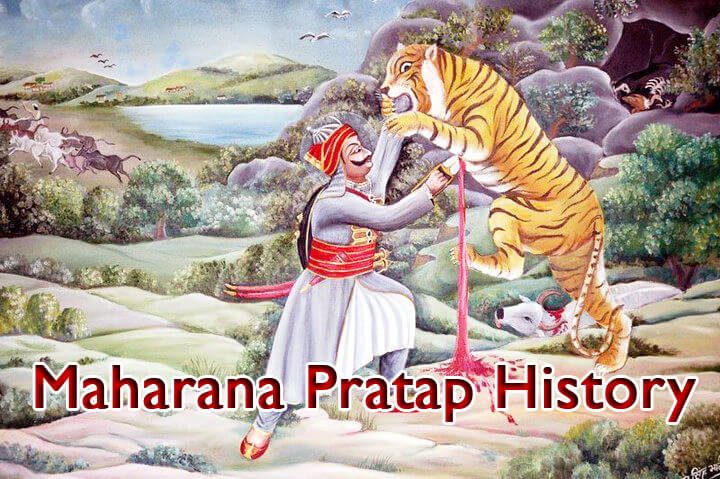
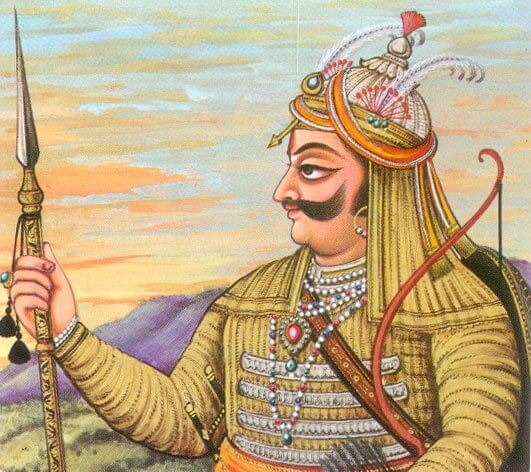

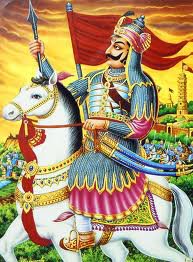
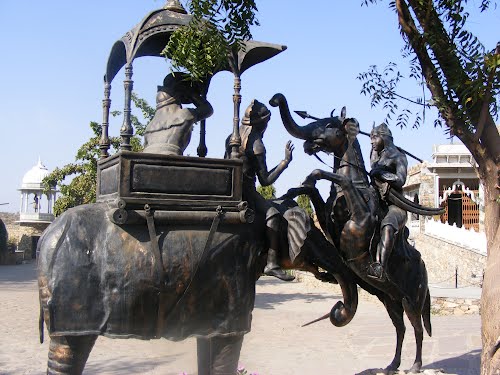





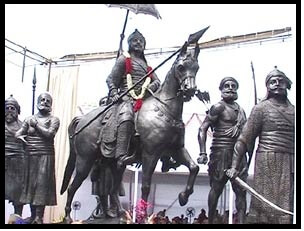
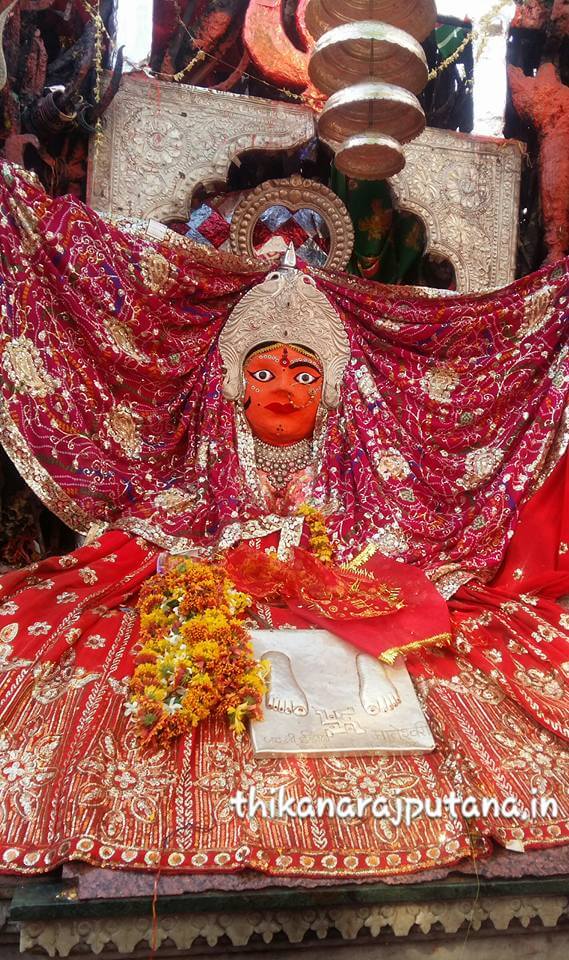
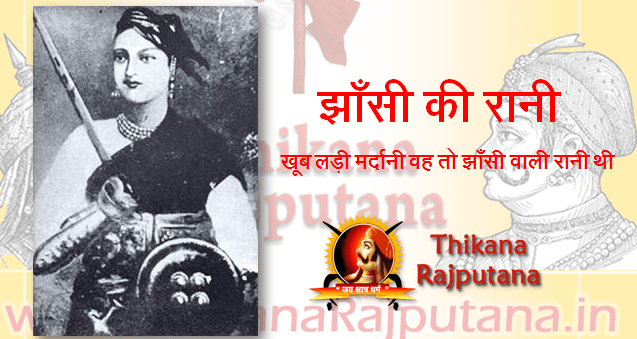
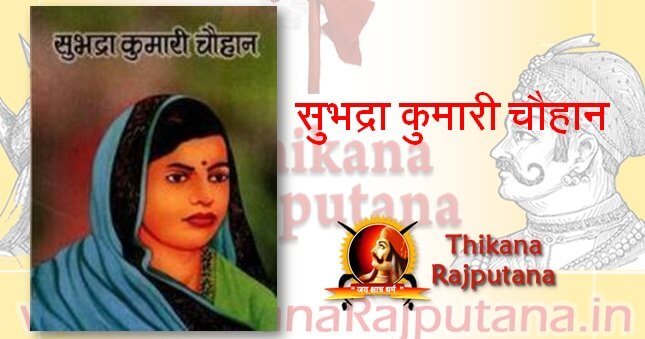


2 Comments
i really like your artical
[…] श्रोत 1, श्रोत 2, श्रोत 3, पिक्चर श्रोत 4 […]